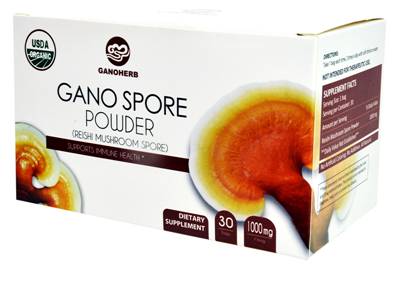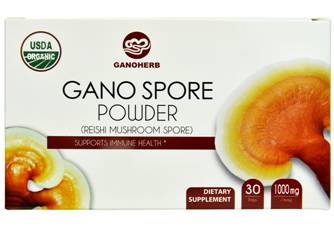Artificial propagation of Astragalus must understand the reproductive characteristics of Astragalus, especially to understand the unique sexual reversal of Astragalus. Unlike most vertebrates, Astragalus does not belong to a single sex. Instead, it is female in the first half of life and male in the latter half of the year. The middle stage of transformation is called the male-and-male body. This shift from female to male is called the phenomenon of sexual reversal.
In the sexually mature group of jaundice, the smaller individuals are females, the larger individuals are mainly males, and the individuals between them are called male and female gonads. This gonad-like tissue is actually a In the dynamic process, during this physiological change, functional females turn into functional males. The gonads of the larval larvae gradually differentiate from the primordial primordial primordial primordial primordial primordial primordial primordial primordial primordial primordial primordial primordial primordial gonad to the oocyte. The gonad develops from the larvae into the adult. The first time individuals who have entered the mature gonadal are females. After spawning by females, it can be clearly found that the ovaries in the gonad begin to degenerate, and the testis originating in the cords begins to form and gradually branches and enlarges, that is, the gonad develops toward the direction of maleness. That is, in the male and female body state. After this, the ovaries are completely degraded, and the testis tissues are fully developed, and well-developed spermatogonia are produced until the mature spermatozoa are formed. At this time, the individual jaundice has transformed into a typical male. At this time, the gonad is not an egg, but an sperm, and this pheasant does not change after it becomes male, and it exists as a male throughout life.
The gonad is a tubular organ located on the right side of the abdominal cavity. Beginning to be female, its development, sexual reversal process is as follows:
Female period: The outer layer of the ovary has a layer of connective tissue forming a capsule. The inside of the membrane is an ovarian cavity. It is filled with oocytes of various shapes, sizes, and different developmental stages. The egg diameter is 0.08-3.7 mm.
Stage I: The ovaries are white and transparent and slender. The eggs are invisible to the naked eye. Under the dissecting microscope, transparent and small oocytes can be seen, with large nuclei, few cytoplasms, and egg diameters of 0.08-0.12 mm. The larvae of 5.9 cm in length and 0.4 g in body weight can be found in small, transparent ovaries after dissection. The ovary of 8.2 cm in length is filled with small, transparent oocytes.
Phase II: This period of the ovaries is slightly thicker than the stage I, and the ovaries are white and transparent. The eggs are invisible to the naked eye, and the ovaries are filled with small transparent oocytes in an anatomical microscope. The egg diameter is 0.13 to 0.17 mm, and the ovaries of 15 cm or less are usually in phase II.
Stage III: The ovaries have changed from white to light yellow, visible to the naked eye. There are many small ovaries in the ovary. A round or irregularly shaped oocyte can be clearly seen under a dissection microscope. More yolk particles have been deposited in the cells. The egg diameter is 0.15-2.2 mm. At the same time, there are a few oocytes of stages I and II in the ovary, and the total length of the stage III gonads is 15-26 cm.
Stage IV: The ovaries are obviously thick, the oocytes are also significantly enlarged, the size of the eggs is relatively uniform, and the color changes from light yellow to orange. Under anatomical microscope, egg particles fill the entire oocyte and the nucleus gradually shifts. The diameter of the egg is 2.2-3.4 mm. The length of the astragalus in this period is 10-30 cm in length and very few can reach 40 cm or more. The ovaries that developed to the end of stage IV accounted for 44.6 to 59.2% of the length of the carcass, with an average of 53.2% (from the gonads to the head).
Phase V: The ovaries are thick and filled with orange-colored globules. They are spherical. The egg diameter is 3.3-3.7 mm. The oocytes are filled with tightly packed yolk globules. The nucleus moves to the end of the egg and the ovum becomes free in the ovary.
Male-male body stage: Most of the jaundice begin to enter this period after the 2nd age and the total length is 24.5-37cm. Individual lengths may reach more than 45cm. At this stage, the gonadal capsule thickens, the ovaries gradually degenerate, and the testes gradually form. The body tends to be female at first and tends to male at later stages. Under the microscope, a small number of small, residual eggs can be seen. These small ovules do not mature, but gradually degenerate and absorb, and break down into orange floes. At the same time, incompletely formed tubules can be seen.
Male stages: Most jaundice are males over 3 years of age, but also have male inversion when they are 2 years old. The immature testis is slender, grayish-white with pigment spots on the surface. Under the microscope, seminiferous tubules and inactive spermatozoa are found. Sexual mature testes are thicker than the original. There are various types of melanin markings on the surface. There are many small and active spermatozoa under the microscope.
Comprehensive domestic and foreign scholars' investigations on the sexual reversal of Scutellaria baicalensis can be summarized as follows: Adults with a body length of 200 mm or less are females; adults with a body length of about 220 mm begin to reverse; when they are between 360 and 380 mm in length, the number of males and females Almost equal; males account for a majority above 380 mm; all males above 530 mm. However, the reversal is also affected by factors such as environmental conditions. It is very likely that the growth of Astragalus membranaceus is accelerated under the condition of rich biological feed, and unusually long body length appears during the same growth period.
Effects of Environmental Factors on the Reversal of Jaundice
In production practice, it is often found that individuals with very large females and individuals have very small males. It can be seen that the cause of the reversal of jaundice induction is multifaceted.
Effect of water temperature
The temperature change of animal of Astragalus membranaceus, the change of water temperature has a direct influence on the strength of its life activities, and also affects the course of gonadal development. The suitable water temperature for Astragalus membranaceus is 15 to 30°C. When the water temperature is lower than 15°C or higher than 30°C, the appetite of Astragalus membranaceus diminishes, the food intake decreases, and the growth and development are hindered. The faster the temperature changes, the greater the temperature difference and the greater the effect. When the water temperature exceeds 35 °C or less than 10 °C or the short-term temperature difference is greater than 5 °C, it will lead to the development of gonads in jaundice.
Effect of pH
Astragalus is suitable for living in a neutral or acidic water body. When the pH of the pool water is greater than 7, it affects the development of gonads. The greater the pH, the greater the influence. When the pool reaches a pH of 10, the jaundice becomes restless and does not feed. After 7 to 10 days, the skin begins to fester and soon die. Therefore, the new cement pool can only be used after dealkalization. When disinfecting or changing water with quicklime, pay attention to changes in the pH of the pool water.
Effect of water depth
The eels of Astragalus membranaceus are severely degraded. Breathing in the water cannot be achieved by relying solely on earthworms. It is necessary to use the pneumothorax, fin folds, oral cavity, pharyngeal cavity, and skin to breathe. In the natural water body, Astragalus can directly breathe oxygen in the air. Even if the dissolved oxygen in the water is insufficient, it will not affect the growth and development of Astragalus. However, in a masonry pond, if the pool water is too deep, the Astragalus column loses its fulcrum and it cannot breath oxygen in the air. Under long-term hypoxic conditions, the gonadal development process is prolonged.
The impact of sound and light
Huang Xie believes in the night out, likes to live in a quiet water environment, so it should not be built in the night, noisy, flashing roadside. Experiments have shown that noise and flashes stimulate the gonads at night, the development is slow, sexual maturity is delayed, and the body is still female at an average body length of 40 cm.
The effect of gender ratio
In the reproductive season, the simple female population will lack males, and part of the females will be reverted to males in advance. Therefore, individuals are often found to be very young.
Impact of feeding and management
Astragalus is dominated by animal foods, and it is miscellaneous. If the bait is of high quality, fresh, uniform feeding and timely, then the sexual development is fast. If the quality of the bait is poor and the feeding is uneven, if it is not timely, sexual maturity will be postponed. Poor water quality, changing the water frequency or changing the water flow rate, the temperature difference will delay the sexual maturity.
Accurate sex identification is the key to artificial reproduction of Astragalus. Body length, age, and season are not enough to qualify as criteria. Identification can generally be judged from both morphological and physiological aspects. The female head is small and does not uplift, the back of the body is dark brown, has no spots, is not good at jumping, and has a mild temperament. During the breeding season, the abdomen expands and is orange-red and has a red horizontal stripe. The outline of the ovary is clear in vitro. Obvious large bull ups in the male and females, with spots on the back of the body. In the breeding season, the abdomen does not inflate, but there are blood-like markings, and the genital pores are red and swollen, and light pressure on the abdomen can squeeze out a small amount of semen.
Ganoderma Extract (Ganoderma Lucidum extract/Reishi mushroom extract) is extracted from top-graded organic shell-broken Ganoderma Lucidum spore powder using advanced modern technology. Spores are the seeds of Ganoderma Lucidum. When it matures, the spores are released from the mushroom cap. They are also where most of the nutrients of Ganoderma Lucidum are contained. In order to allow the nutrients inside the spore powder to be fully absorbed by human body, we used a patented technology called low temperature physical shell-breaking technology to crack the cell wall of Ganoderma Lucidum spore powder.

The Ganoderma we used for this product comes from our self-built organic Ganoderma farm at Mt. Wuyi. Both the farm and the GMP workshop have acquired organic certifications from 4 countries and regions including Chinese, Japan, the US, and the EU. We do not use any type of herbicide, pesticide, or chemical fertilizer during the whole cultivation process, delivering the best and safest product to our customers.

By using extraction technology, we can increase the concentration of Ganoderma polysaccharides and triterpenes in the product. Reishi Mushroom Powder polysaccharides and triterpenes both work together to enhance human’s immune system, fighting against diseases and infections. Also, Ganoderma can help protect the liver, increase sleep quality as well as relive stress.
Ganoderma Extract
Ganoderma Extract,Reishi Spore Powder,Ganoderma Lucidum Powder,Ganoderma Lucidum
Ganoherb International Inc. , http://www.ganoherb.us